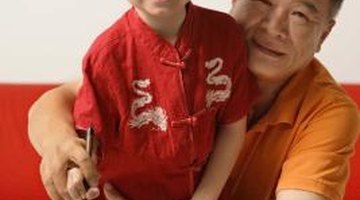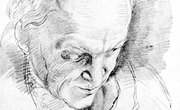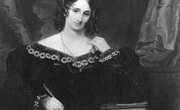"The Jade Peony" by Wayson Choy joins "Farewell to Manzanar" and "Snow Falling on Cedars" as explorations of Japanese citizens -- here living in Vancouver's Chinatown -- and their attempts to overcome cultural obstacles as they search for knowledge and fulfillment. The need for both personal and national identity is the theme; symbolism is invested in inanimate objects, in characters and in the setting.
Cultural Clashes Echo Worldwide Clashes
In addition to the expected cultural conflicts that occur between the three siblings who narrate the novel and their elder family members, the story follows from 1933 to 1945 the worldwide antipathy to the Japanese that arose after Pearl Harbor. The family has experienced hatred long before this: Canada's 1923 Chinese Exclusion Act has already impacted their neighbors. The Canadian setting itself becomes a symbol for the no-man's land that both Chinese and Japanese -- often confused in racial stereotypes -- endured during World War II.
Junk Becomes Knowledge and Beauty
Two central inanimate symbols profoundly affect Sek-Lung, the tale's protagonist and the narrator of the novel's final section. His uncle tells him about a jar of a hundred fireflies, and the vision enchants him until he learns the jar was only for light to study by. Also, with his grandmother Poh-Poh, he creates a wind-chime made entirely of junk -- odds and ends picked up over the years -- the music of which is "splendid." Thus prosaically dull items becomes catalysts for learning and aesthetic appreciation.
The Old One as Catalyst
Choy invests great symbolism in the character of Poh-Poh, aka "the Old One," as she is the bridge between cultures for Sek-Lung, as well the touchstone for the old ways. She is refreshingly free of ancient-Chinese-wisdom-style cliches, saying that old mouths "can drop honey or drop shit," as she recognizes the shortcomings of the ancient strictures and the inevitability of changes brought about by world events. She is also the family's font of spirituality, bequeathing her jade peony to Sek-Lung in response to his always-seeking nature.
Sek-Lung, Central to the Tale
Sek-Lung searches throughout the story for belonging, for answers and for identity, both for himself and for his people. He's the only character to bridge the cultures, as he is the only one to understand Poh-Poh's values. At the same time, he seeks self-fulfillment against racial hatred, treacherous social and cultural stigma and the uncertainty of a world war. He embodies both the novel's central theme and the aspirations of the people it depicts.
Related Articles
References
- The Jade Peony; Wayson Choy
Writer Bio
Michael Stratford is a National Board-certified and Single Subject Credentialed teacher with a Master of Science in educational rehabilitation (University of Montana, 1995). He has taught English at the 6-12 level for more than 20 years. He has written extensively in literary criticism, student writing syllabi and numerous classroom educational paradigms.











